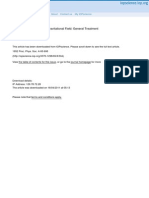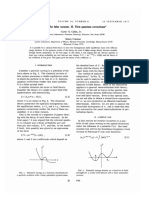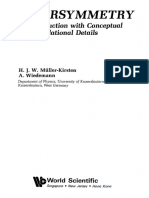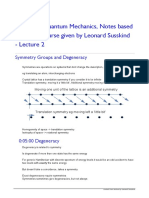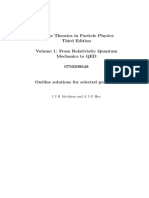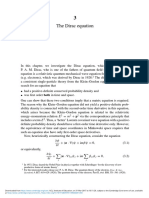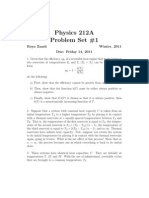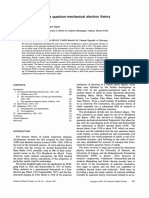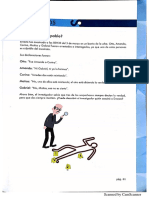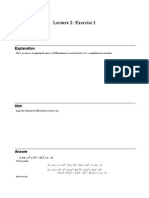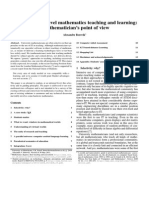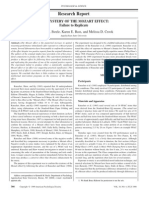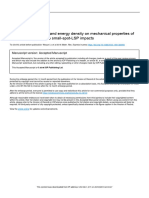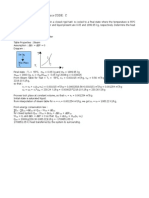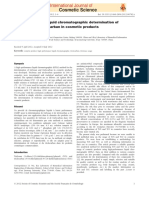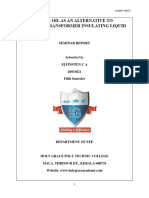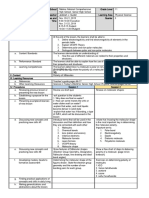50% found this document useful (4 votes)
2K views4 pagesAdvanced QM Susskind - Ramo Notes
1) The document summarizes key concepts from lectures on quantum fields and their energy. It discusses the creation and annihilation operators for quantum fields, and how they relate to finding the number of particles and total energy.
2) Fourier transforms are introduced to write wavefunctions in terms of momentum space. Commutation relations for creation and annihilation operators are defined.
3) The total energy of a quantum field is derived from the Hamiltonian in terms of creation and annihilation operators, incorporating both kinetic and potential energy terms. Momentum is conserved in interactions.
Uploaded by
Eddy R. VélezCopyright
© © All Rights Reserved
We take content rights seriously. If you suspect this is your content, claim it here.
Available Formats
Download as PDF, TXT or read online on Scribd
50% found this document useful (4 votes)
2K views4 pagesAdvanced QM Susskind - Ramo Notes
1) The document summarizes key concepts from lectures on quantum fields and their energy. It discusses the creation and annihilation operators for quantum fields, and how they relate to finding the number of particles and total energy.
2) Fourier transforms are introduced to write wavefunctions in terms of momentum space. Commutation relations for creation and annihilation operators are defined.
3) The total energy of a quantum field is derived from the Hamiltonian in terms of creation and annihilation operators, incorporating both kinetic and potential energy terms. Momentum is conserved in interactions.
Uploaded by
Eddy R. VélezCopyright
© © All Rights Reserved
We take content rights seriously. If you suspect this is your content, claim it here.
Available Formats
Download as PDF, TXT or read online on Scribd
/ 4


